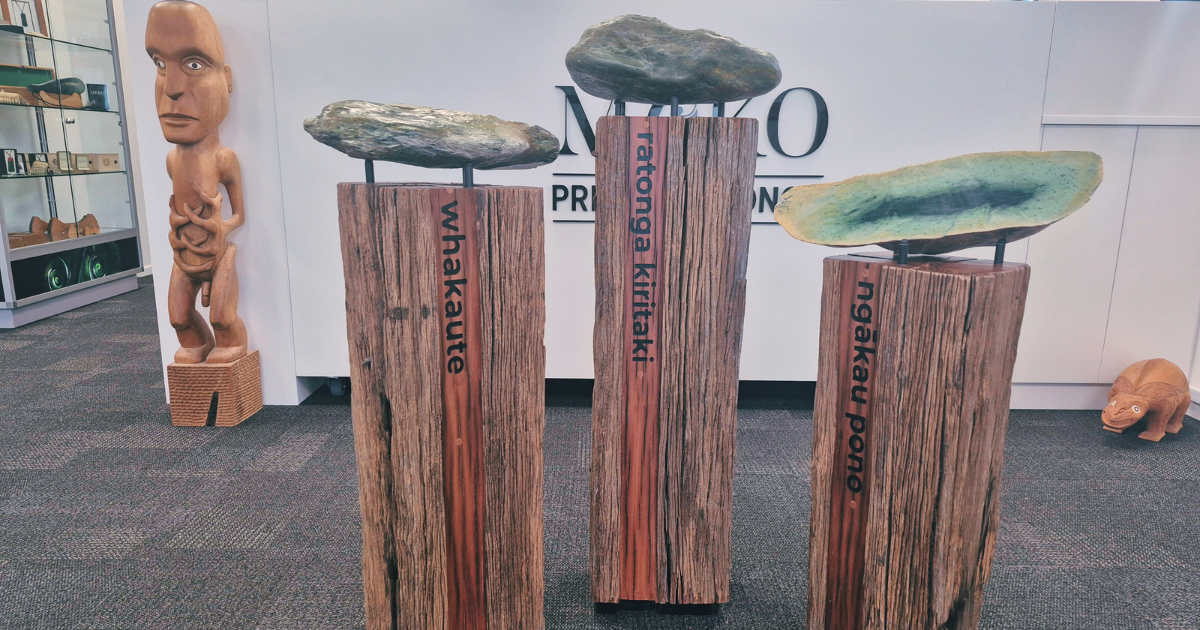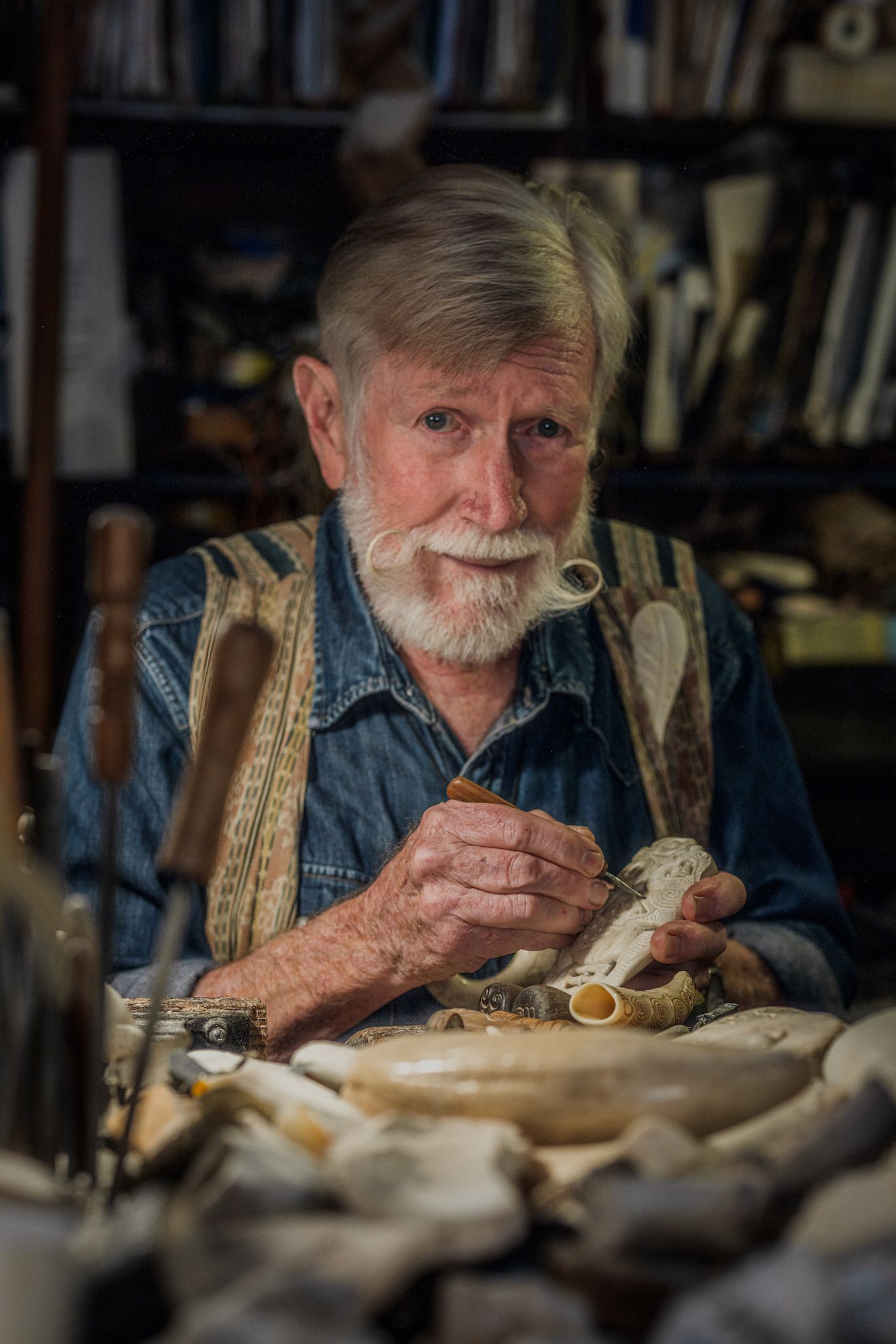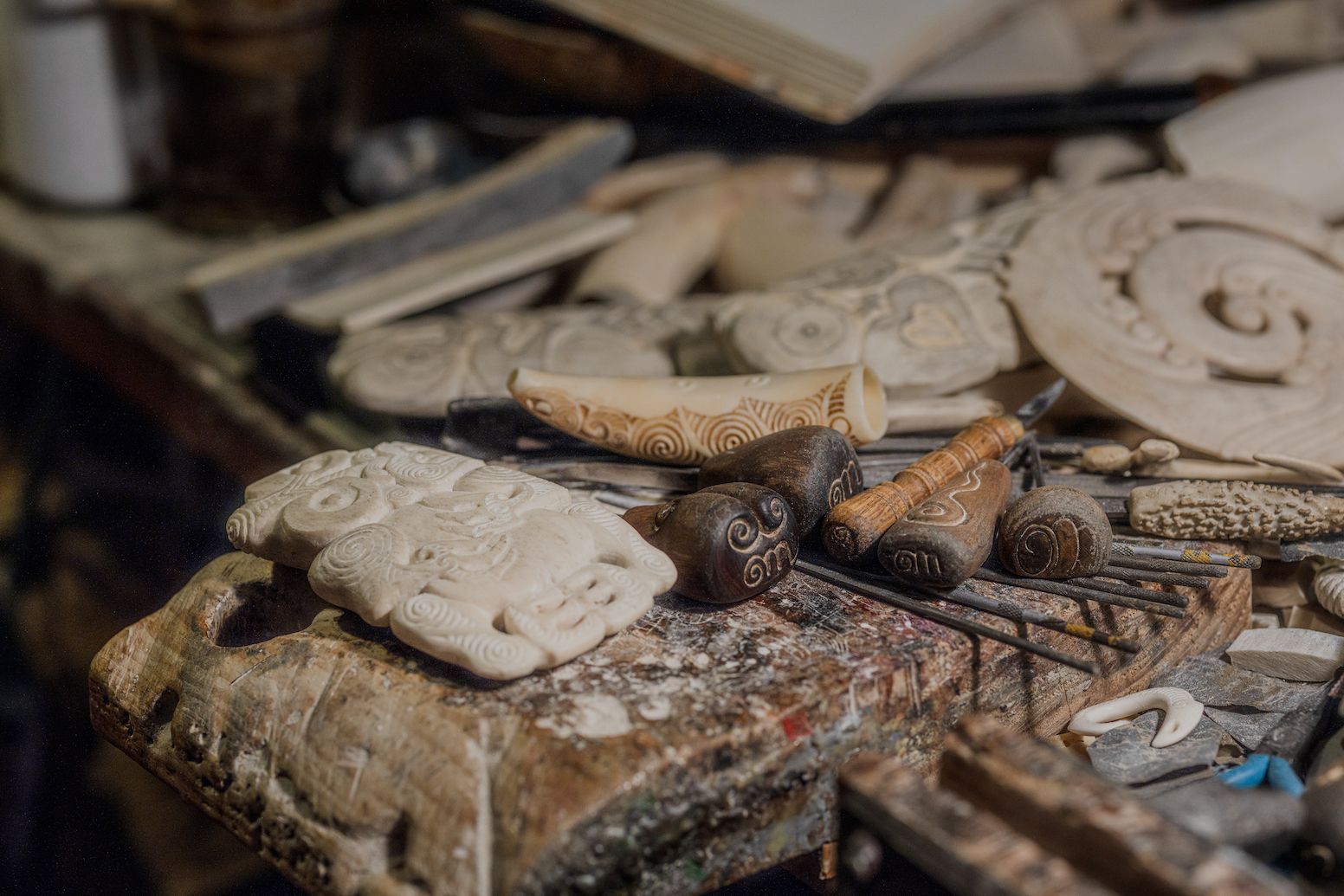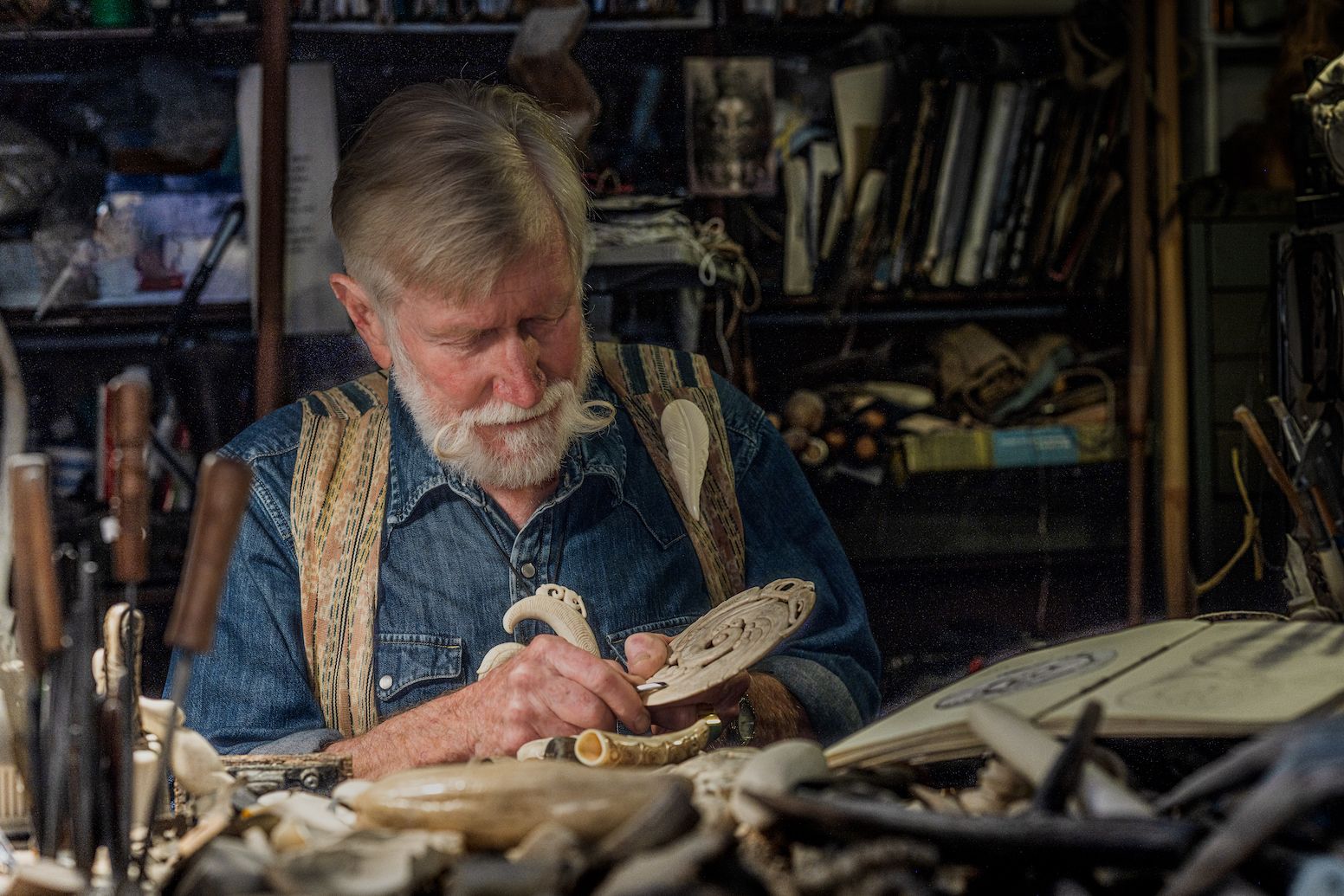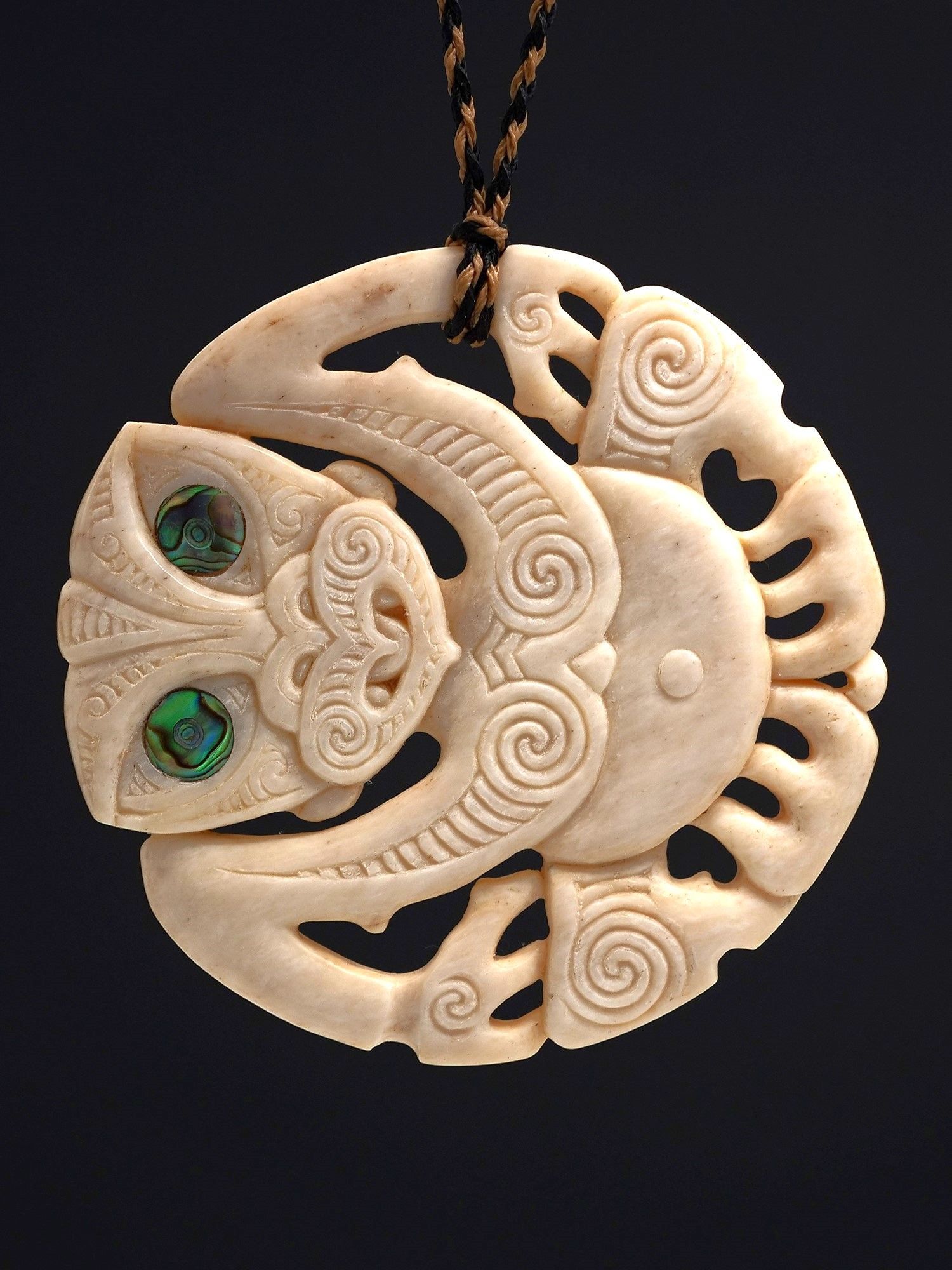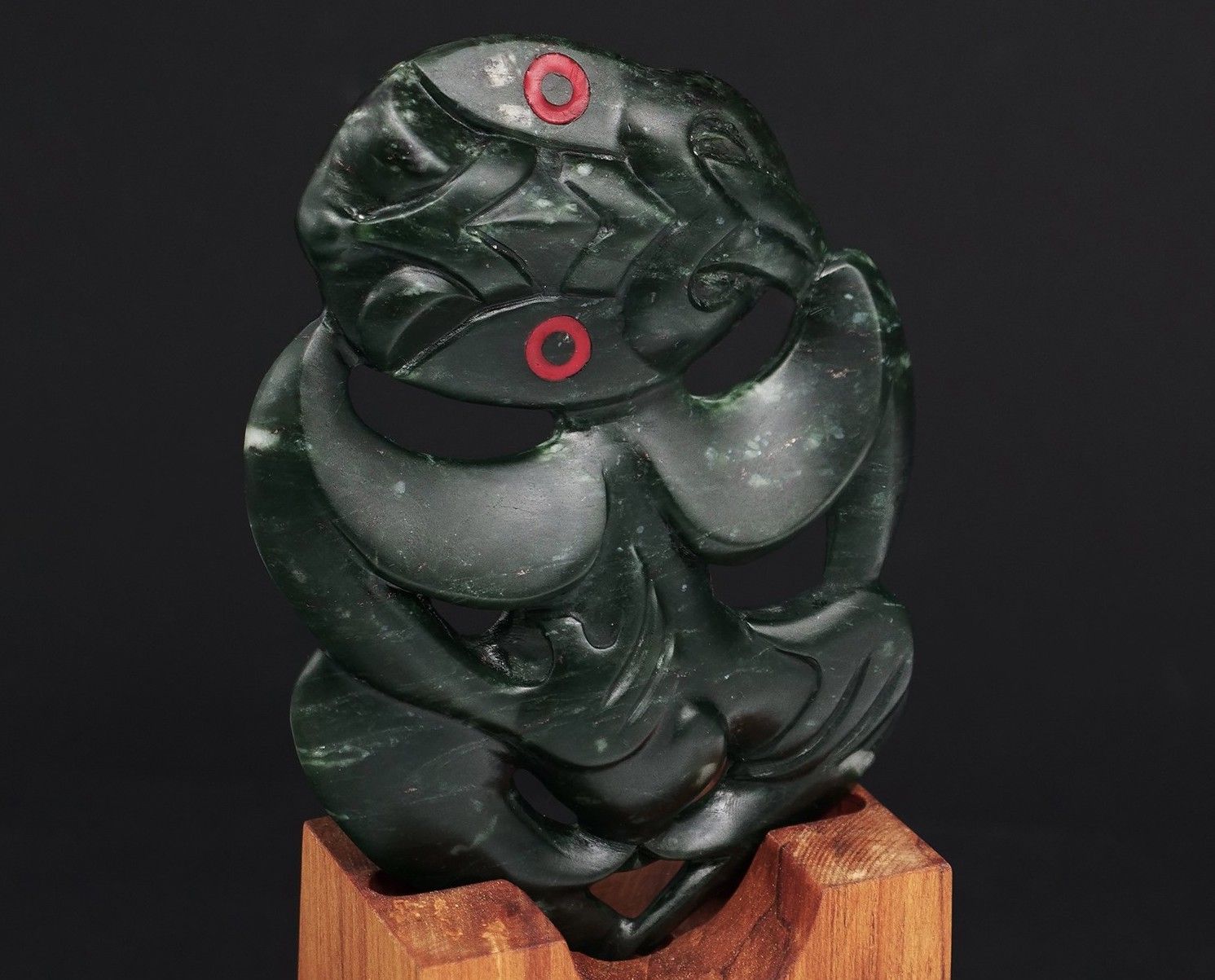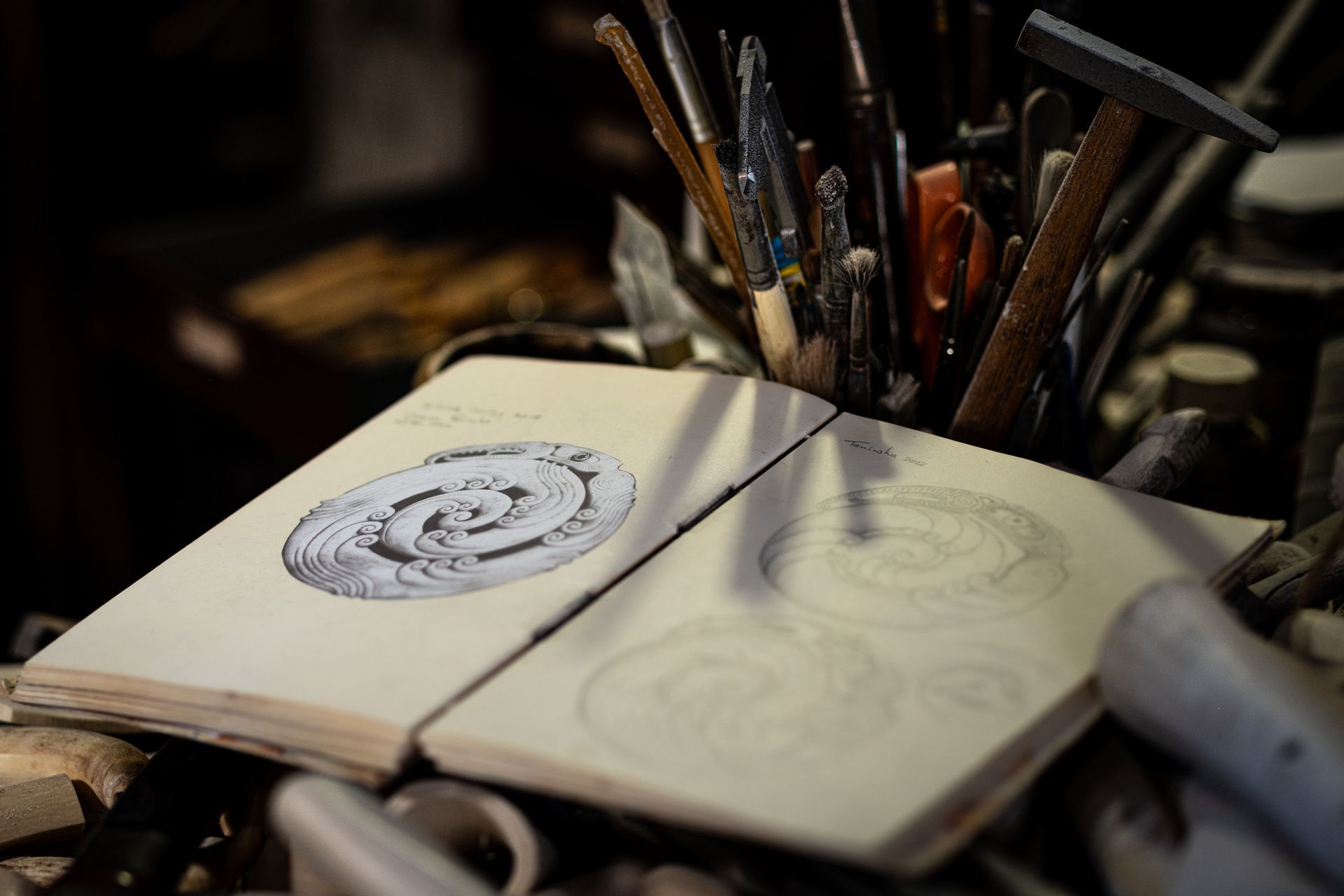
Owen Mapp and the Art of Whale-Bone Carving
Dragons and Taniwha: 50 Years as an Artist Carver
Owen Mapp is a highly regarded bone carver from Aotearoa New Zealand. At Moko Pounamu we are privileged to have some of Owen’s collection of pieces for sale in our retail shop and online.
We welcome anyone who would like to come into the shop to view our collection in person.
But we thought it was time to share more about this talented artist, his background and his approach to carving the taonga he creates.
Let’s start with The Mapp Code. Owen’s approach in his own words:
- I make things to last at least a thousand years
- I am attracted by ancient artefacts and attempt to translate their influences into contemporary concepts of lasting quality by creating a timeless object
- I see myself as a South Pacific carver influenced directly by my culture and surroundings
- Throughout history we have adorned our bodies with treasure, rare things, beautiful common objects and animistic amulets. My own involvement is a continuation of creating, carving and wearing of amulet type adornment
- I make objects that are to be handled and fondled while on the body, or carried in the pocket, not just objects to be seen
- I believe in the magic or spirit of the carving.
“I am an avid collector … I started collecting Māori stone and bone artefacts on my parents farm in the Wairau Valley. Every country I travelled in later I added more stone artefacts and then the collecting expanded drastically.”
The Wairau Bar Dig
At the age of 14, in 1959, Owen was invited to join an archaeological dig at the famous Wairau Bar site, near Blenheim.
“It was an early dream of mine, that I become an archaeologist, with a museum. As a teenager, this wish was realised! This was the starting point of my involvement with and commitment to carving.”
Subsequently, Owen has worked on archaeological projects in New Zealand, Israel and Sweden, further pursuing his fascination with archaeology and ancient stone tools.
For someone enthralled by bone and bone carving, it is not surprising that Owen was drawn to Māori carving as this was the carving culture accessible and relevant, especially given his powerful experience at the Wairau Bar.
1969 – A Career Begins
Self-taught and carving since 1969, Owen is acknowledged as Aotearoa’s first professional bone carver. As you can see in the video, he has assembled his carver’s toolbox (of self-made tools) through observation, experimentation and being mentored.
All his adult life he has been a student of museum collections, studying works and imagining how they were made.
At the beginning of his carving career, he was reproducing ‘old artefacts from whale teeth that were readily available’ while being mentored in the knowledge of Te Ao Māori by Ngāti Porou kaumatua Selwyn Hovell, Bill Kerekere and Pine Taiapa.
Owen’s relationship with Te Ao Māori is a fundamental consideration in any assessment of his work given contemporary sensibilities and the fact that his work has sometimes been deemed Māori.
“I’m approached by government departments for “Māori” carvings, often by Māori advisors”.
While some may describe Owen’s work as ‘Māori’, this is a description he rejects.
“I have no Māori blood, I am not a European carver, I’m a fifth generation New Zealander … I may be a Pākeha carver but I’m comfortable in New Zealand’s bicultural mixed blood situation. I see myself and family developing with Māori and Pākehā influences.”
Japan – Netsuke
In 1989, Owen travelled to Japan to explore his interest in netsuke, and find new opportunities to carve and exhibit. He was introduced to Japanese carving, particularly netsuke, through collections at Te Papa, Auckland Museum and Olveston in Dunedin. Owen is now globally recognised as a distinguished netsuke carver – a remarkable achievement.
In Japan he was widely recognised and was regularly selected into significant local exhibitions, publications, international exhibitions and represented in prestigious collections.
You can find some of Owen's work available to browse and buy in our online shop (as well as in our Durham Street showroom) - simply head to our whalebone collection.
Moko Pounamu Knowledge Library
